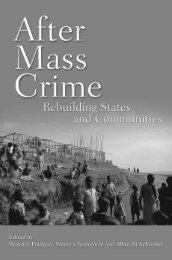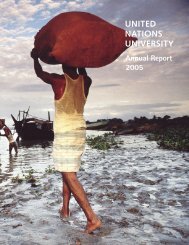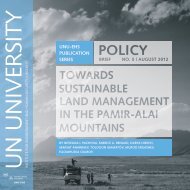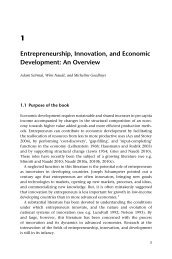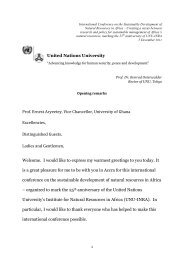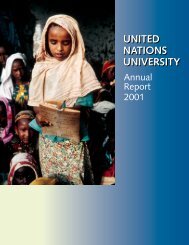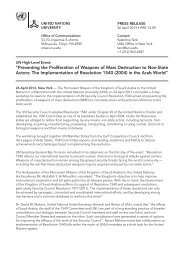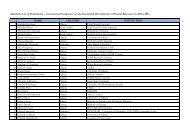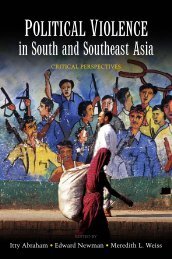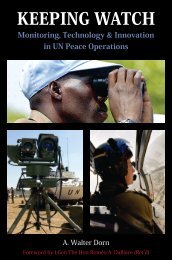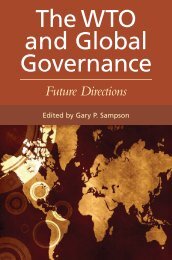Sample Chapter - United Nations University
Sample Chapter - United Nations University
Sample Chapter - United Nations University
Create successful ePaper yourself
Turn your PDF publications into a flip-book with our unique Google optimized e-Paper software.
Asia and regional integration theory 13<br />
but alludes to (or at least includes) the state in which the prevailing practice<br />
is to refrain from the use of force in disputes (Pouliot, 2010).<br />
From this it can be seen that there are several different patterns of regional<br />
security. Buzan and Wæver (2003) postulate that regional security<br />
systems depend on the distribution of power among the nations in a region,<br />
as well as relations with other regions around the globe, and fall<br />
into three patterns: (1) regional conflict formation (ally/adversary relationships);<br />
(2) security regimes; and (3) security communities. The first is<br />
what they call a standard regional security complex, in which anarchy or<br />
a balance of power is dominant. In the second, a security regime is created<br />
at the regional level and in the third a security community is created<br />
where there is no possibility of the use of force. 15 Of course, even in the<br />
security sector, integration (delegation of national authority to a supranational<br />
organization) is not inconceivable. 16 If such integration were to<br />
develop into the sole military institution in that region, that region would<br />
be, in a Weberian sense, a sovereign state.<br />
As with other sectors, there can be a difference between substantive<br />
integration (peace between countries) and formal integration (security<br />
regimes) in the security sector. For example, using the Deutschian model,<br />
societal integration leads to the formation of pluralistic security communities<br />
without necessarily requiring security regimes between the nations<br />
in the region. Conversely, even if a given region has a security regime in<br />
place, behind it there could be conflict or a balance of power (a standard<br />
regional security complex as described by Buzan and Wæver (2003)).<br />
3 Patterns of regional governance: Political integration/<br />
governance<br />
In the context of integration theory, there are several different perspectives<br />
on political integration and governance (D in Figure 1.3). One involves<br />
political unification, in which the ultimate result of integration is<br />
that a region becomes a sovereign state (for example, federalism). 17 This<br />
of course could follow the pattern illustrated in Figure 1.3, in which economic<br />
integration (A) is accompanied by the integration of societal<br />
values and the formation of a supranational regional identity (B), the<br />
creation of a pluralistic security community (C) and finally the formulation<br />
of a constitution and the formation of an entity with a unified government<br />
with military and diplomatic arms. 18<br />
Another perspective is that instead of moving towards the formation<br />
of a single sovereign state in a given region, integration is manifested as a<br />
variety of international organizations (shared sovereignty) and/or international<br />
regimes in different sectors. Instead of the region becoming a



